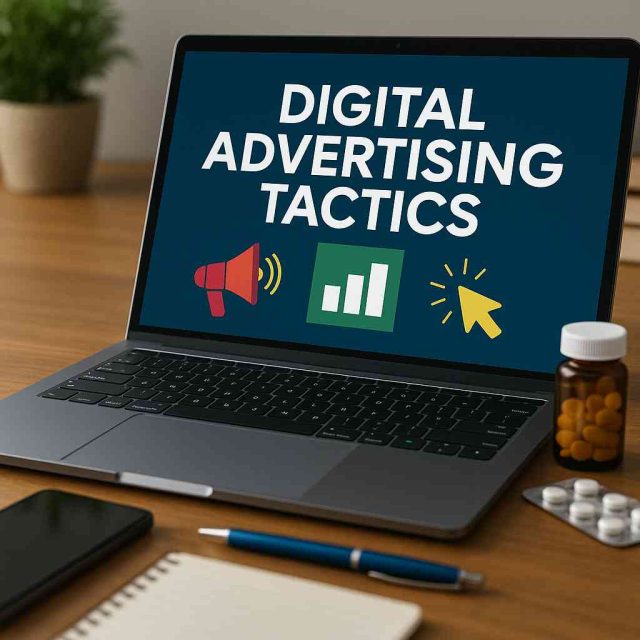Digital transformation has reshaped nearly every industry, and the pharmaceutical space is no exception. As healthcare professionals and patients turn to online platforms for information, pharma brands are adapting by deploying precise digital advertising tactics to meet them where they are. But which strategies actually drive awareness, engagement, and conversions in a highly regulated, competitive space?
Table of Contents
- The Evolving Landscape of Pharma Digital Advertising
- Precision Targeting and Programmatic Ads
- Native Advertising and Sponsored Content
- Data-Driven Personalization and Retargeting
- Conclusion
- FAQs
The Evolving Landscape of Pharma Digital Advertising
Pharma brands are now embracing the power of digital platforms to connect with patients, caregivers, and healthcare professionals (HCPs). However, advertising in the life sciences sector requires a different approach due to compliance guidelines, medical accuracy, and sensitive topics.
This is where strategic digital advertising tactics become critical. Instead of relying solely on traditional display ads, pharma marketers are exploring a range of innovative methods. These include branded and unbranded campaigns, social media compliance tools, disease awareness initiatives, and high-precision media buying. For example, campaigns for treatments like Trulicity, Dupixent, and Biktarvy are often supported with robust digital strategies across multiple touchpoints.
To learn how pharma brands are evolving in this digital age, check out Pharma Marketing Network’s featured insights.
Precision Targeting and Programmatic Ads
One of the most effective digital advertising tactics in pharma today is precision targeting through programmatic advertising. Rather than casting a wide net, pharma brands can reach high-value audiences with remarkable specificity. Programmatic platforms enable the use of first-party data, lookalike audiences, and contextual placements across brand-safe content environments.
Platforms like eHealthcare Solutions offer privacy-compliant access to niche healthcare audiences. This includes segments like HIV caregivers, endocrinologists, and individuals researching chronic conditions. With the help of real-time bidding and AI optimization, these tools deliver messaging exactly when and where it’s most effective.
Moreover, programmatic advertising allows marketers to refine campaign performance on the fly. Metrics such as click-through rate (CTR), cost per action (CPA), and audience engagement are easily tracked, helping teams maximize ROI and comply with industry guidelines.
Native Advertising and Sponsored Content
Another rising trend among digital advertising tactics for pharma brands is the integration of native advertising. Native content fits seamlessly within the editorial environment, avoiding disruption while delivering educational or branded messaging. When done well, it provides genuine value to the reader.
Pharma marketers use native advertising to promote disease awareness, guide conversations about treatment options, and offer patient support resources. This format is particularly effective when linking to unbranded educational content that builds trust before introducing branded solutions.
Sponsored content, such as expert-authored articles or video explainers, allows pharmaceutical brands to establish credibility. Whether highlighting patient stories, therapeutic innovations, or research breakthroughs, this form of advertising encourages time-on-site and deeper engagement.
Native advertising can be paired with internal links to authority sites, such as Pharma Marketing Network, to boost SEO and reinforce brand trust.
Data-Driven Personalization and Retargeting
In a digital world driven by customization, data-informed personalization stands out as a powerful tool. Using anonymized data, brands can serve relevant messaging based on search history, page views, and interaction patterns. This allows for smarter segmentation across healthcare professionals, patients, and caregivers.
For example, a visitor reading about asthma management might later receive targeted ads for Dupixent or related asthma therapies. These personalized messages enhance recall and relevance. Additionally, combining this approach with retargeting can capture users who left a landing page before converting.
Retargeting strategies have proven especially effective in pharma because the decision-making process is often lengthy. Whether the goal is to schedule an appointment, download a patient guide, or enroll in a CRM program, reinforcing brand presence through subtle reminders keeps the audience engaged.
To ensure ethical and regulatory compliance, pharma companies must partner with digital platforms that understand HIPAA, FDA, and local privacy standards. Transparency in data usage also strengthens trust among informed consumers.
Conclusion
Digital advertising tactics for pharma brands continue to evolve in response to market demands, privacy laws, and audience behavior. From precision targeting and programmatic buying to native content and personalized retargeting, these strategies help pharma companies reach their audiences efficiently and meaningfully. As competition intensifies, brands that embrace smart, compliant digital advertising approaches will be the ones that resonate, engage, and convert.
FAQs
Why do pharma brands use native advertising?
It allows them to communicate in a non-disruptive, educational format that builds trust and engagement.
How does programmatic advertising benefit pharma companies?
It enables precise audience targeting and real-time campaign optimization, improving ROI while ensuring compliance.
Is retargeting ethical in pharma advertising?
Yes, when done transparently and in line with privacy regulations like HIPAA, retargeting provides relevant content without compromising user trust.
What digital tactics work best for branded medications?
Sponsored content, contextual display ads, and programmatic campaigns around condition-specific keywords work well.
Can pharma brands advertise on social media?
They can, but it must be done with tools that support regulatory compliance and message control.
“This content is not medical advice. For any health issues, always consult a healthcare professional. In an emergency, call 911 or your local emergency services.”
